We use affiliate links to run our site. When you buy through links on our site, we may earn an affiliate commission, without any added cost to you. Learn more
Potatoes are one of the most popular vegetables in the world. They’re easy to grow and can be prepared in a variety of ways. To get the best results, it’s important to start with good soil.
When it comes to planting potatoes, preparing the soil is key to success. Once the last frost has passed and the ground starts to warm up you can start preparing the soil.
We’ve already talked about how to grow potatoes. This guide will show you how to prepare the best soil for potatoes, so you can enjoy a bumper crop.
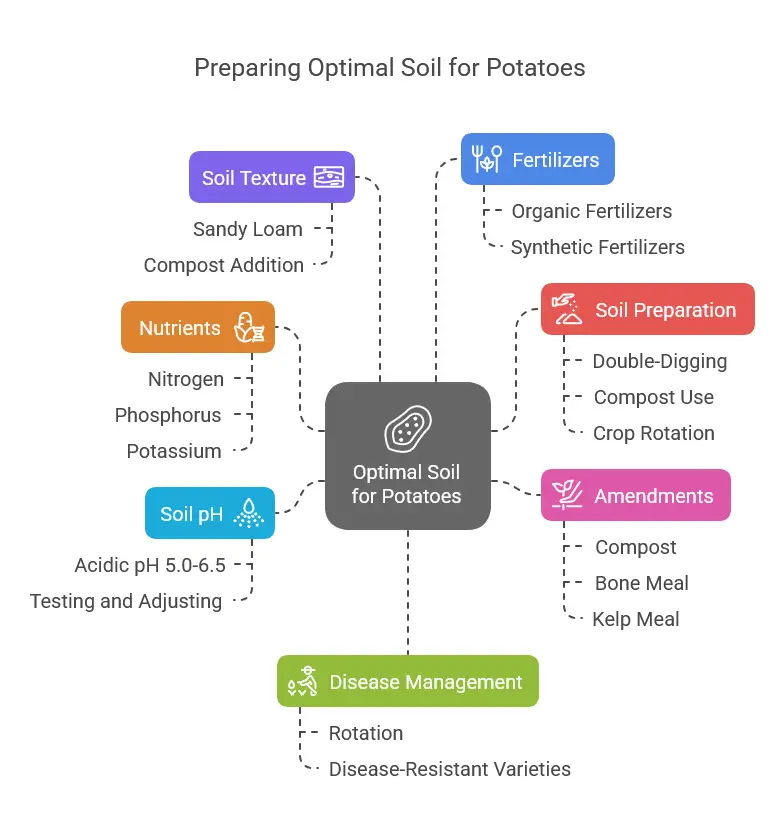
What Is The Best Soil For Potatoes?
You can plant potatoes in just about any well-drained soil. They only hate soggy soil. As most of the growth occurs underground, the best soil for growing potatoes is loose sandy loamy soil with a pH range of 5.5 to 6.5 (slightly acidic soil), where they can expand easily.
If you have this kind of soil you do not need to do anything, but if your soil is heavy, compacted, clay soil that is not loose enough or not ideal for growing potatoes, don’t be disheartened. You can improve your soil very easily.
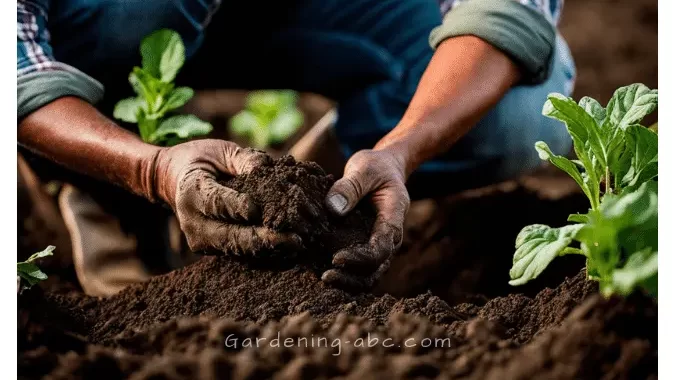
Here are two ways to improve your potato-growing soil:
- By adding well-rotted compost to the soil.
- By planting a cover crop.
Adding Organic Matter to The Soil:
One of the easiest ways to loosen heavy soil is to add organic matter to the soil. Organic matters like leaves, peat moss, hay, well-rotted compost, etc. open up the soil and let air, water, and nutrients circulate easily.
Add these organic materials to the soil before the potato growing season starts.
Planting Cover Crops:
Another simple way to improve the quality of your potato-growing soil is to grow cover crops on the soil before planting potatoes. These cover crops will build up organic matter in the soil. Once you harvest the cover crop, plow the plants and wait for two months before planting potatoes.
A cover crop like annual ryegrass will decompose and will add moisture-holding organic matter and nutrients into the soil.
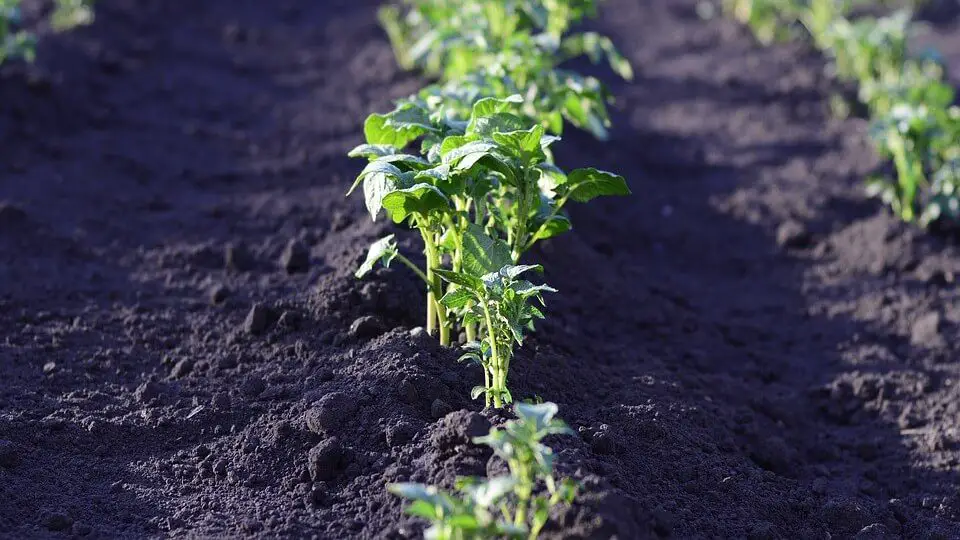
Soil pH For Potatoes:
One of the most important things to consider when planting potatoes is the pH of the soil. The soil pH measures the acidity or alkalinity of the soil. The ideal soil pH for potatoes is in the range of 5.5.0 to 6.5, which means they prefer slightly acidic soil.
A soil pH that is too low or too high can lead to nutrient deficiencies, poor root growth, and reduced yield. For example, potatoes grown in soil with a pH of 7.5 or above can experience a lack of phosphorous and other micro and macronutrient uptake.
On the flip side, if the soil pH is below 5, the plant can not take phosphorous or molybdenum from the soil no matter how many nutrients are present in the soil.
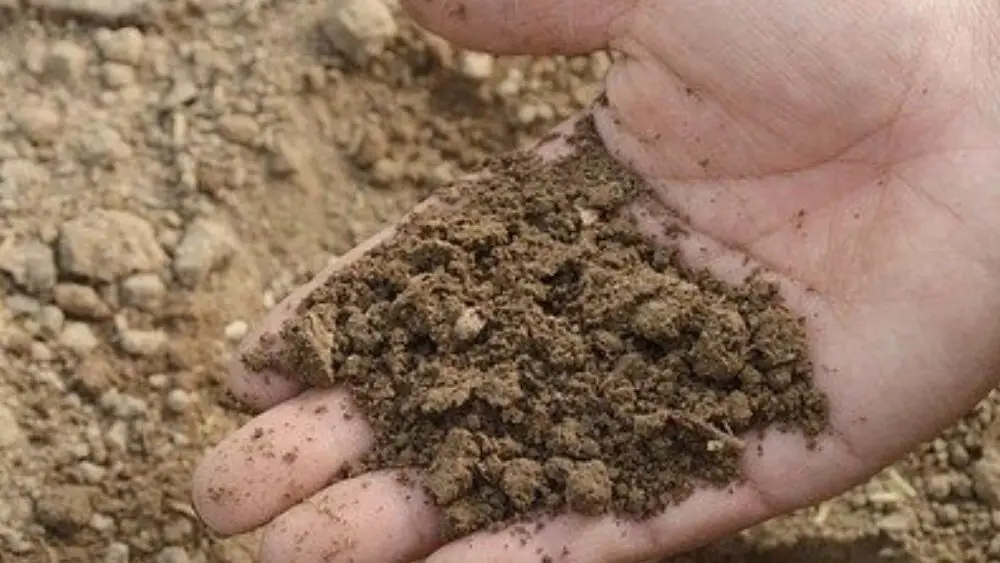
So before you start preparing the soil, always test the current soil pH. A soil tester like this is enough to get the result. If the current pH is higher than the ideal level, you can bring it down to the desired level. And if the pH is too low, use these steps to bring it up to the ideal level.
How To Prepare Soil Beds For Potatoes:
Preparing a proper soil bed is very important for growing potatoes. If the bed is not made properly, it can result in soil compaction, lack of aeration in potato roots, and inferior-quality potatoes.
The first rule for preparing a potato bed is never to plant potatoes in an area where any other plant from the Solanaceae family has been planted earlier. It can increase the infection from pathogens. The best area for planting potatoes is where a legume plant has been planted earlier.
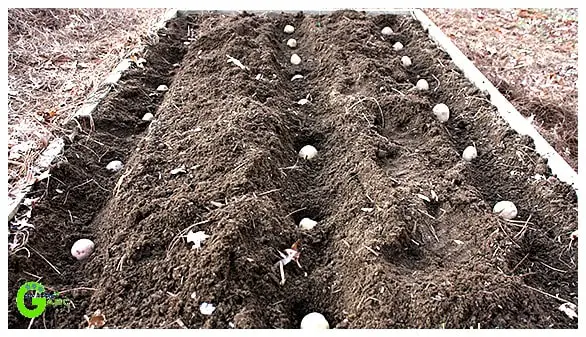
Use nutrient-rich, loose, sandy loamy soil with a pH of 5.5 to 6.5. Add 3-4 inches of well-rotted compost and mix it with the existing soil. Loosen the soil up to a depth of 12 inches.
Turn the soil several times so that no lumps form. Remove any stones or debris from the soil. Make sure the soil drains pretty well. To increase the drainage of the soil, you can mix coco coir, perlite, etc, with the soil.
Planting Potatoes in The Soil:
Once your potato seedbed preparation is complete, you can start planting the sprouted seed potatoes. Although you can use seed potatoes directly, sprouting the potatoes before planting can help reduce the overall growing time. Here is how you can easily sprout seed potatoes.
Plan your planting accordingly so the soil temperature does not drop below 50 degrees F when you plant potatoes.
When preparing the soil for your potatoes, remember that it is important to loosen up the hard clay. And if you are like me, then there is nothing better than digging your hands into a pile of rich loamy soil.
- Durable Material: Made of 300g thick non-woven…
- Excellent Drainage: Breathable material ensures…
- Reinforced Handle: Strong polypropylene webbing…
I hope this post was helpful in understanding what is the best soil for growing potatoes and how easily you can prepare this without investing too much money.
We have a lot of information on growing potatoes at home on this site. Here is a link to those posts.
Like the post? Don’t forget to PIN IT
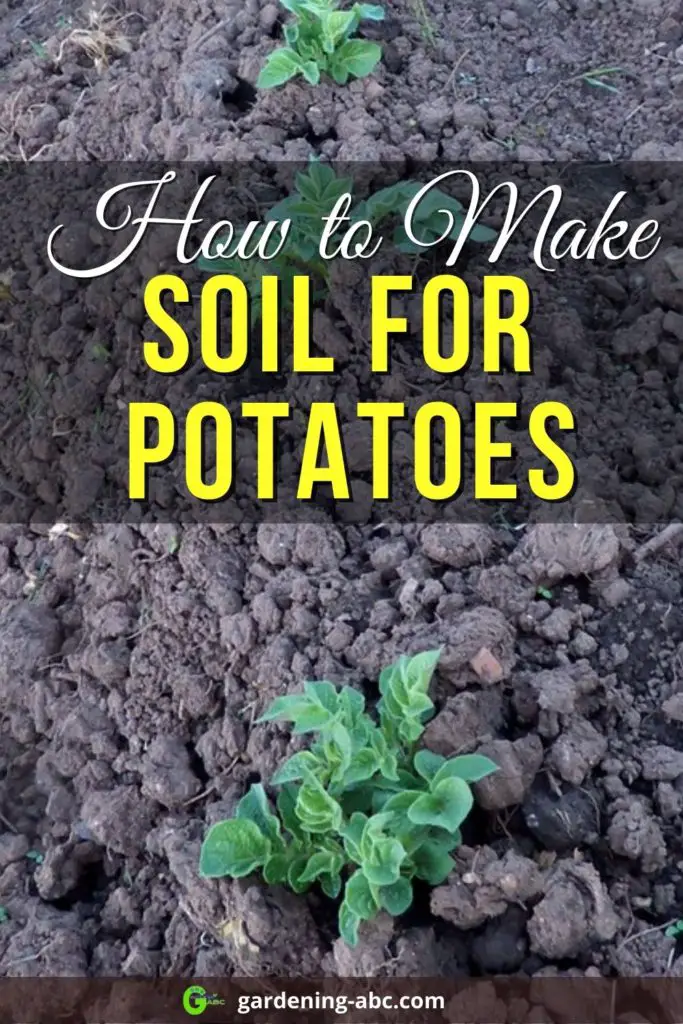
Amazon and the Amazon logo are trademarks of Amazon.com, Inc, or its affiliates.

Hi there! My name is Prasenjit and I’m an avid gardener and someone who has grown a passion for growing plants. From my hands-on experience, I have learned what works and what doesn’t. Here I share everything I have learned.




